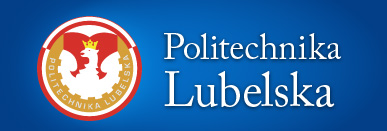Impact assessment of effectiveness of thiourea and THAM for corrosion process on carbon steel in calcium chloride environment
© 2016 Budownictwo i Architektura. Publikacja na licencji Creative Commons Attribution-NonCommercial-ShareAlike 4.0 (CC BY-NC-SA 4.0)
Cytowanie: Budownictwo i Architektura, 15(2) (2016) 064-072, ISSN 1899-0665, DOI: 10.24358/Bud-Arch_16_152_09
| Historia: | Opublikowano: | 01-06-2016 |
|---|
Streszczenie:
–
Słowa kluczowe:
–
Impact assessment of effectiveness of thiourea and THAM for corrosion process on carbon steel in calcium chloride environment
Abstract:
The main objective of this paper is to present a comparison of the corrosion inhibiting effect of thiourea and THAM (tri(hydroxymethyl)aminomethane) on carbon steel samples immersed in calcium chloride solutions. The testing has shown that to inhibit the corrosive action of the calcium chloride solution, the thiourea solution can be successfully replaced by the THAM solution. The study was performed with the use of st3s, structural and reinforcing steel. In the case of st3s steel samples, the application of the 0.01% THAM solution causes a decrease of its weight loss by about 60%. The application of a 10-times stronger THAM solution causes an increase of the corrosion inhibition on the tested samples by about 20%. A combined protective action of the thiourea and THAM solutions brings about an increase of the corrosion process inhibition by about 70% both for the st3s and the structural samples. The 0.01% and 0.1% THAM solutions applied t0 inhibit the corrosion process on structural samples cause an increase of the corrosion protection by about 50% and 15% respectively.
Keywords:
corrosion inhibitor, thiourea, THAM, carbon steel, anticorrosive properties
Literatura / References:
1. Finsgar M., Milosev I. Inhibition of copper corrosion by 1,2,3-benzotriazole: A review.
Corrosion Science 52 (2010) 2737-2749.
2. Tiu B.D.B., Advincula R. Polymeric corrosion inhibitors for oil and gas industry: Design
principles and mechanism.
3. Finsgar M., Jackson J. Application of corrosion inhibitors for steels in acidic media for the oil
and gas industry: A review. Corrosion Science 86 (2014) 17-41.
4. Verma Ch., Ebenso E.E., Bahadur I., Obot I.B., Quaraishi M.A. 5-(Phenylthio)-3H-pyrrole-4-
carbonitriles as effective corrosion inhibitors for mild steel in 1M HCl: Experimantal and
theoretical investigation. Journal of Molecular Liquids 212 (2015) 209-218.
5. Khadiri A., Saddik R., Bekkouche K., Aouniti A., Hammouti B., Benchat N., Bouachrine M.,
Solmaz R. Gravimetric, electrochemical and quantum chemical studies of some pyrizidine
derivates as corrosion inhibitors for mild steel in 1M HCl solution. Journal of the Taiwan
Institute of Chemical Engineers 2015.
6. Mert B.D., Yuce A.O., Kardas G., Yazici B. Inhibition effect of 2-amino-4-methylpyridine on
mild steel corrosion: Experimental and theoretical investigation. Corrosion Science 85 (2014)
287-295.
7. Zaferani S.H., Sharifi M., Zaarei D., Shishesaz M.R. Application of eco-friendly products as
corrosion inhibitors for metals in acid picking processes – A review. Journal of Environmental
Chemical Engineering 1 (2013) 652-657.
8. Soylev T.A., Richardson M.G. Corrosion inhibitors for steel in concrete: State-of-the-art
report. Construction and Building Materials 22 (2008) 609-622.
9. Founda A.E.S., Etaiw S.E.H., El-Bendary M.M., Maher M.M. Metal-organic frameworks
based on silver (I) and nitrogen donors as new corrosion inhibitors for copper in HCl solution.
Journal of Molecular Liquids 213 (2016) 228-234.
10. Li X., Deng S., Fu H., Xie X. Synergestic inhibition effects of bamboo leaf extract/major
components and iodide ion on corrosion of steel in H3PO4 solution. Corrosion Science 78
(2014) 29-42.
11. Negm N.A., Kandile N.G., Badr E.A., Mohammed M.A. Gravimetric and electrochemical
evaluation of environmentally friendly nonionic corrosion inhibitors for carbon steel in 1M
HCl. Corrosion Science 65 (2012) 94-103.

